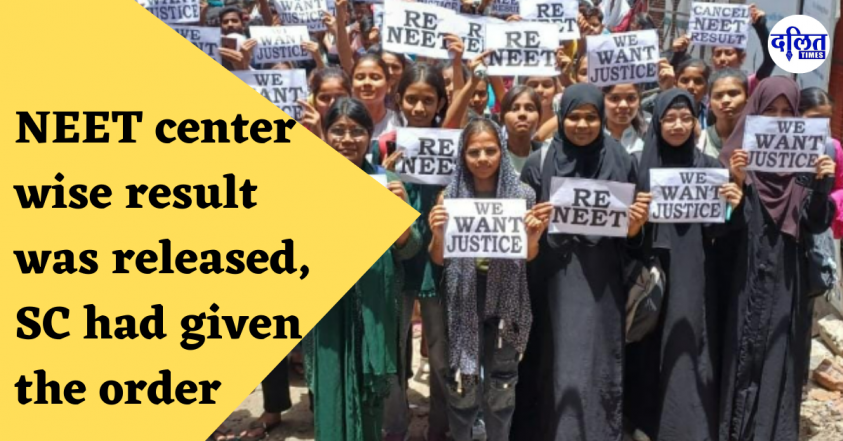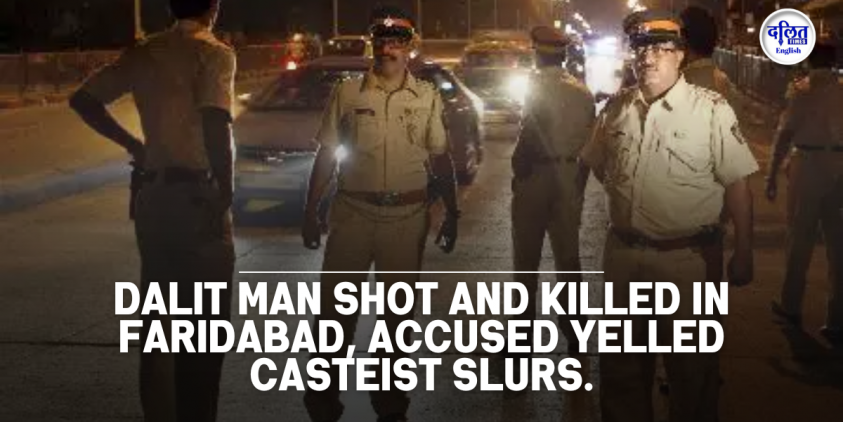by: Bindu Ammini/Dalit Feminist
(“You cannot build anything on the foundation of caste. You cannot build up a nation, you cannot build up a morality.” – Dr.B R Ambedkar)
On May 10, 2025, a 25-year-old Dalit youth was barred from entering a local temple in Kavanadala village of Tumakuru district, Karnataka, by members of the dominant Vokkaliga community. The incident, yet another reminder of the virulent endurance of untouchability, unfolded in defiance of constitutional guarantees, state law, and basic human dignity.
According to the available reports, the victim, whose name is being withheld for safety reasons, attempted to enter a temple managed by a committee dominated by Vokkaligas. He was obstructed, insulted, and denied entry solely on the basis of his caste identity. This act, rooted in the age-old practice of caste apartheid, has once again exposed the gaping disconnect between constitutional promises and the lived realities of Dalit communities in rural India.
Following the intervention of the district administration, an FIR was registered against members of the temple committee. The administration also convened a peace meeting in an attempt to “diffuse tensions”—a move that, while well-intentioned, stops short of addressing the structural impunity that emboldens such caste-based exclusions in the first place. The victim, showing immense courage, approached the jurisdictional Badavanahalli Police Station and lodged a formal complaint. Subsequently, officials visited the site and initiated preliminary investigations.
Caste Apartheid Behind Temple Doors
The Indian Constitution, under Article 17, abolishes untouchability in all its forms. Section 3 of the Protection of Civil Rights Act, 1955 specifically criminalizes the denial of entry to temples on the basis of caste. Moreover, the Scheduled Castes and Scheduled Tribes (Prevention of Atrocities) Act, 1989 provides for stringent penalties against individuals or groups preventing Dalits from accessing public religious institutions.
Yet, despite this legal framework, dominant caste groups continue to treat temples as their private fiefdoms. The incident in Kavanadala is not an isolated one. In Karnataka alone, several cases in recent years have highlighted caste-based restrictions in temples, water sources, and cremation grounds. These practices operate under the patronage of local power structures, temple committees, and social hierarchies sustained through cultural violence and political silence.
State Silence and Ritual Impunity
While FIRs and administrative visits offer the appearance of action, what remains missing is structural accountability. Peace meetings serve to pacify rather than rectify. Arrests are rare. Convictions are rarer still. Caste atrocity cases often falter due to “compromise settlements” forced by local elites or because of institutional apathy during investigation and prosecution.
The state, in such instances, appears more invested in restoring social order than delivering justice. Dalits are told to be “patient,” to “maintain harmony,” while dominant castes are rarely dislodged from their inherited authority over places of worship.
Temples as Battlegrounds of Equality
For centuries, access to temples has symbolized more than religious inclusion—it signifies equal citizenship. Dr. B.R. Ambedkar’s historic Mahad Satyagraha (1927) and Kalaram Temple Entry Movement (1930) were not merely about ritual participation but about staking claim to dignity and public space. Denying Dalits temple entry today is a continuation of the same system that Ambedkar and thousands of Bahujans resisted.
It is critical to recognize that this is not about faith, but about power. In most such cases, the temples in question are not private religious spaces but public institutions—often built on common land or managed by trusts registered under the Hindu Religious and Charitable Endowments Department. The temple in Kavanadala, according to preliminary reports, falls under the jurisdiction of the local religious trust, making such exclusion illegal under existing state laws.
What Must Be Done
- Immediate Legal Action: The FIR must be pursued under relevant sections of the PoA Act, not just general IPC provisions. Denial of access based on caste is not a “dispute”; it is a criminal act.
- Temple Trust Accountability: The state government must order an inquiry into the temple committee. Membership of those found guilty of caste discrimination should be revoked, and the trust should be reconstituted with adequate SC/ST representation.
- Monitoring and Compliance: The Karnataka State Commission for Scheduled Castes should suo motu take cognizance of this case. Regular audits of temple management bodies for caste composition and non-discrimination practices must be institutionalized.
- Public Mobilization: Anti-caste organizations and civil society must pressure the government to treat such incidents not as aberrations but as systemic failures.
Entry Into Temples, Exit From Slavery
The Kavanadala incident is a stark reminder that for Dalits in India, entry into temples is still contingent on caste. Despite legal abolition, untouchability remains encoded into the daily lives of Bahujans—not just in religious spaces, but in education, employment, housing, and beyond. As long as the state remains content with reactive measures and dominant castes face no structural deterrents, caste apartheid will persist—ritualized, normalized, and justified in the name of tradition.
“You cannot build anything on the foundation of caste. You cannot build up a nation, you cannot build up a morality.” Dr.B R Ambedkar. The temple gate in Kavanadala may be small, but it stands today as a giant symbol of a democracy still struggling to enter its own Constitution.



